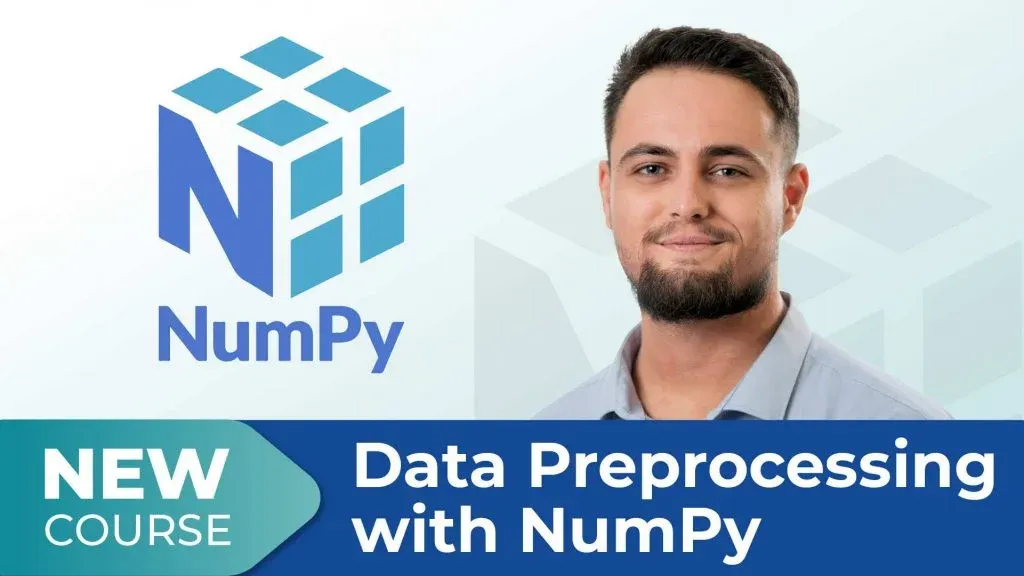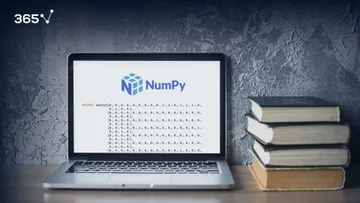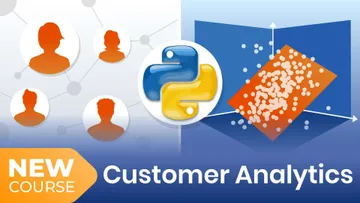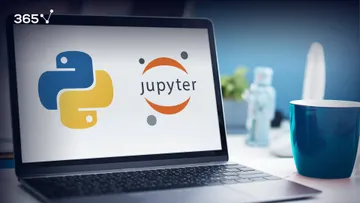
Hi, my name is Viktor - a Hamilton College graduate with a double degree in Mathematics and Economics, and a course creator at 365 Data Science - and I’m delighted to announce the latest addition to our Program: The Data Preprocessing with NumPy Course!
In this brief post, I’ll walk you through the course features, its structure, and the practical skillset it will help you develop. In the end, I’ll share a bit more about myself and the projects I’ve worked on here, at 365 Data Science.
The 365 Data Science Data Preprocessing with NumPy Course
The idea behind this hands-on course is to guide you through one of Python’s most popular packages – NumPy. I’ll explain why it’s so important and help you explore the various applications of the ndarray class in practice.
I did my best to make sure that by the time you complete the course, you’ll be confident working with arrays. You'll also learn how to manipulate their dimensionality, as well as how to quickly refer to the documentation when in doubt. Furthermore, you’ll be ready to take advantage of NumPy’s various built-in functions and methods to create your own datasets with random data.
I will also teach you how to use the statistical capabilities of NumPy to analyze your data, as well as its preprocessing ones, through filling missing values, shuffling, sorting, and stacking. And, finally, I've included a full practical example with a real-world dataset, so you can apply everything you have learned.
Who Is This Course for?
The Data Preprocessing with NumPy course is a perfect fit not only for beginners but for all of you who want to take their Python programming skills to the next level.
What Is the Structure of the Course?
The course comprises 51 lectures, 10 exercises, 2 quizzes, and 26 downloadables. If you’d like to explore all topics in the course curriculum, you can find them on the Data Preprocessing with NumPy course page.
What Will You Learn?
The course will help you develop a myriad of skills necessary to make the most of NumPy in your practice.
You will learn how to:
- Install and upgrade NumPy
- Make the most of the NumPy documentation
- Manipulate ndarrays
- Apply conventional, stepwise, and conditional slicing to arrays
- Create your own datasets by generating arrays of random and quasi-random data
- Access and modify your file system through NumPy and work with npy and npz files
- Make statistical computations with NumPy - minimal and maximal values, averages, covariances, correlations, histograms
- Clean and preprocess data - find and fill missing values, reshape an array, remove corrupted data, shuffle and sort
- Slice and dice your data through stripping, stacking, and concatenating
About the Author
As I mentioned, I hold a double degree in Mathematics and Economics from Hamilton College, New York.
My analytics background stems from my Statistics, Econometrics, Financial Time-Series Econometrics, and Behavior Economics education.
In terms of coding, my experience includes working with C, C++, and Python, as well as MATLAB and STATA. If you’re curious to learn about my experience and projects, you can find more details in this interview.
The Data Preprocessing with NumPy course is part of the 365 Data Science Program, so current subscribers can access the courses at no extra cost.
To learn more about the 365 Data Science Program curriculum or enroll in the 365 Data Science Program, please visit our courses page.
Want to explore the curriculum or sign up 15 hours of beginner to advanced video content for free? Click on the button below.










